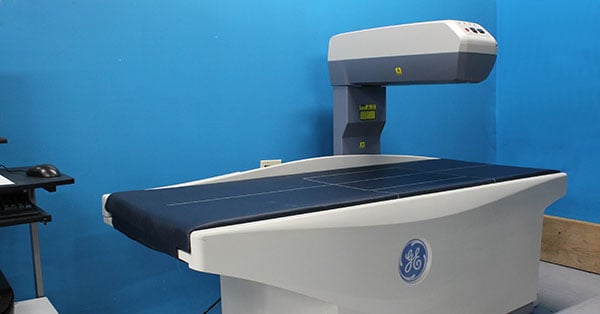
Updated: November 13, 2023 : 2 min read
GE Lunar Bone Densitometer Comparison: Lunar Prodigy vs Lunar DPX
If you’re looking for the right entry-level bone densitometer, a GE Lunar model is a good pick. It can, however, be difficult to discern which Lunar DEXA will be the best fit for your practice. Understanding what features are common to the GE Lunar brand and which features are unique to the DPX and Prodigy Models is a great place to start. For the sake of simplicity let’s look at three common models - Prodigy Primo, DPX Bravo and DPX Duo.
Common Characteristics
All three models are designed to assess risk for fracture, estimated Total Body Fat and to measure bone density. All three GE Lunars use encore Windows Software, and have tools like Patent Trending, and Automatic Smart Scan to assist physicians in assessing risk. All three tables have the same weight capacity (350 lbs.), and all three come standard with DICOM.
Prodigy Primo (Compact and Full Size)
The GE Lunar Prodigy Primo is a 3rd Generation model and uses Narrow Fan Beam technology, which is the newest technology available. The Prodigy Primo Compact has the smallest footprint (79” x 43” x 51”) and can just about fit in a closet. This model can scan very quickly and has a Quick View – 10 second mode for spine and femur scans. It has some advanced scan features for hands, pediatrics, and even small animals. The Prodigy Primo Full Size can perform Total Body Composition, a sought after feature. The Prodigy Primo is designed and equipped for a physician’s office, but as you can see it has a broader range of applications.
If you scan more than 15 patients per day, and/or you need these advanced features, the Prodigy Primo is the best fit for you.
DPX Bravo
The GE Lunar DPX Bravo is 1st Generation and uses Pencil Beam Technology. Pencil Beam technology is still considered the gold standard for precision. It does have a slower throughput as the single beam must travel to cover the body. The DPX Bravo comes with a swinging arm for ease of access.
If you scan less than 15 patients per day and you don’t need any advanced features, the DPX Bravo is a good fit.
DPX Duo
The GE Lunar DPX Duo is also 1st Generation and uses Pencil Beam Technology, so it also has a slower throughput but excellent precision. What makes this model unique is its dual purpose feature. The DPX Duo is also a DEXAM table and comes with integrated foot rests/stirrups, a procedure tray, paper roll dispenser, washable table pad, and a pull out step. The multi-purpose features makes it ideally suited for an OB/GYN practice. The DPX Duo also has a swinging arm to accommodate exam table use.
If you scan less than 15 patients per day and you want to multi-purpose your OB/GYN exam space, the DPX Duo is your best option.
I hope this helps you discern which model is the best fit for your practice. After all, information is king! Please let us know if you need additional assistance with price/cost information or figuring out the best bone densitometer for your needs.

Jason Block
Jason Block is the Product Manager for Women’s Health Equipment at Block Imaging. Jason loves to help, challenge, and empower people as they make decisions about their medical imaging equipment. When he's not assisting healthcare facilities with their imaging needs, Jason enjoys spending time with his family, coaching multiple sports, and watching the Michigan State Spartans.




